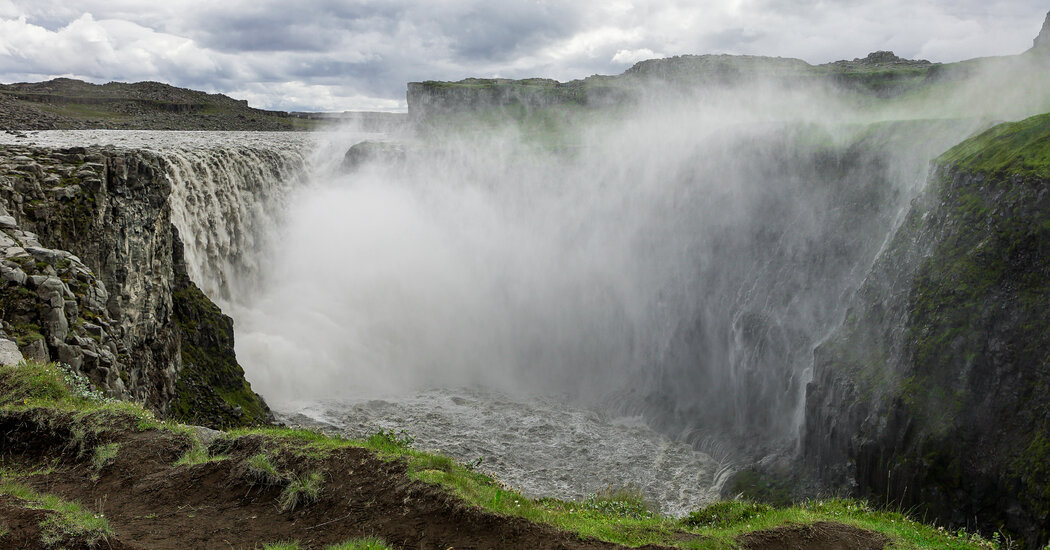
The water circuit
Leaving the lake the next day, we set out to explore the northern roads of the Diamond Circle, heading first for Dettifoss falls.
As Gullfoss waterfall is to the Golden Circle, Dettifoss is to the Diamond. With a 330-foot-wide pounding curtain of water, Europe’s most powerful falls sprayed the extensive gorge-side viewing platforms and walkways, icing the paths.
Travel Trends That Will Define 2022
Looking ahead. As governments across the world loosen coronavirus restrictions, the travel industry hopes this will be the year that travel comes roaring back. Here is what to expect:
Both Dettifoss and our next destination, Asbyrgi, 20 miles north, are part of the northern branch of Vatnajokull National Park, which includes much more inaccessible wilderness, including the Vatnajokull ice cap in southeast Iceland.
The elliptical canyon was made, according to Norse mythology, by the god Odin’s eight-legged flying horse, who left a hoof print on earth. It’s an apt setting for otherworldly legends. The mossy forest surrounding a spring-fed lake at the end of the canyon seemed a fitting home for the “huldufolk” or hidden people that many Icelanders believe live here.
From the canyon, the Diamond route continues about 15 miles northwest to the Tjornes Peninsula, skirting fossilized sea cliffs and turning south at Skjalfandi Bay toward Husavik, the oldest settlement in Iceland and, more recently, the whale-watching capital of the country. A wooden church built in 1907 overlooks its protected harbor, filled with tall-masted wooden ships and fishing trawlers, many now run by whale-watching companies. Facing the harbor, the comprehensive Husavik Whale Museum exhibits many of the species that sailors may see, including an 82-foot-long blue whale skeleton.
Rough seas cancelled boat launches that day, and we settled for scanning the horizon for the telltale blowhole sprays of humpback whales from the modern cliff-top Geosea spa just north of Husavik. The spa channels geothermally heated seawater into pools and, like so many baths in Iceland that cater to tourists, has a wade-up bar.
We spent our last morning in the north hiking the jagged Dimmuborgir lava field near our cabin with its castle-like volcanic rock formations — occupied by trolls, according to signage — before leaving Lake Myvatn. Rejoining the Ring Road, we closed the Diamond loop at Godafoss, another jaw-dropping plunge loaded with legends. Here, when the island converted to Christianity around the year 1000, Iceland’s leader is said to have thrown all his pagan idols into the churning pool created by the semi-circular drop of the Skjalfandafljot river. The betrayal so angered the gods that they split the falls in two.




